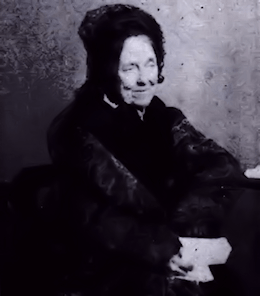Textus Receptus Bibles
Julia E. Smith Translation 1876
| 60:1 | To the overseer upon the lily of song: poem to David to teach; In the setting on fire Aram of the two rivers, and Aram of the station; and Joab will turn back and strike Edom in the valley of salt, twelve thousand. O God, thou didst cast us off, thou didst break us down, thou wert angry; wilt thou turn back to us? |
| 60:2 | Thou didst shake the earth; thou didst rend it: heal its breakings, for it is depressed. |
| 60:3 | Thou didst cause thy people to see a hard thing: thou didst give us to drink the wine of reeling. |
| 60:4 | Thou gavest a signal to those fearing thee, to flee from the face of the bow. Silence. |
| 60:5 | So that thy beloved ones shall be delivered, save with thy right hand and answer us. |
| 60:6 | God spake in his holy place; I will rejoice, I will divide the shoulder, and I will measure the valley of booths. |
| 60:7 | Gilead to me, and Manasseh to me; and Ephraim the strength of my head; Judah my judge. |
| 60:8 | Moab the pot of my washing; over Edom I will cast out my shoe: for me, Philistia shouted for joy. |
| 60:9 | Who will bring me to the city of fortification? who guided me even to Edom? |
| 60:10 | Wilt not thou, O God? thou didst cast us off, and wilt thou not go forth, O God, with our armies? |
| 60:11 | Give to us help from straits, for vain the salvation of man. |
| 60:12 | In God we will do strength and he will tread down our adversaries. |

Julia E. Smith Translation 1876
The Julia Evelina Smith Parker Translation is considered the first complete translation of the Bible into English by a woman. The Bible was titled The Holy Bible: Containing the Old and New Testaments; Translated Literally from the Original Tongues, and was published in 1876.
Julia Smith, of Glastonbury, Connecticut had a working knowledge of Latin, Greek and Hebrew. Her father had been a Congregationalist minister before he became a lawyer. Having read the Bible in its original languages, she set about creating her own translation, which she completed in 1855, after a number of drafts. The work is a strictly literal rendering, always translating a Greek or Hebrew word with the same word wherever possible. Smith accomplished this work on her own in the span of eight years (1847 to 1855). She had sought out no help in the venture, even writing, "I do not see that anybody can know more about it than I do." Smith's insistence on complete literalness, plus an effort to translate each original word with the same English word, combined with an odd notion of Hebrew tenses (often translating the Hebrew imperfect tense with the English future) results in a translation that is mechanical and often nonsensical. However, such a translation if overly literal might be valuable to consult in checking the meaning of some individual verse. One notable feature of this translation was the prominent use of the Divine Name, Jehovah, throughout the Old Testament of this Bible version.
In 1876, at 84 years of age some 21 years after completing her work, she finally sought publication. The publication costs ($4,000) were personally funded by Julia and her sister Abby Smith. The 1,000 copies printed were offered for $2.50 each, but her household auction in 1884 sold about 50 remaining copies.
The translation fell into obscurity as it was for the most part too literal and lacked any flow. For example, Jer. 22:23 was given as follows: "Thou dwelling in Lebanon, building as nest in the cedars, how being compassionated in pangs coming to thee the pain as in her bringing forth." However, the translation was the only Contemporary English translation out of the original languages available to English readers until the publication of The British Revised Version in 1881-1894.(The New testament was published in 1881, the Old in 1884, and the Apocrypha in 1894.) This makes it an invaluable Bible for its period.